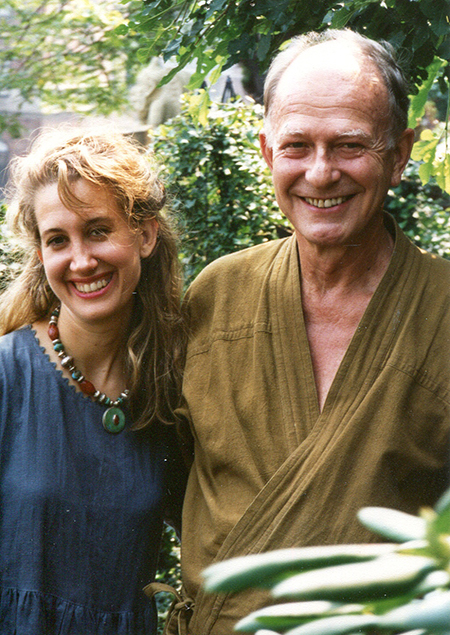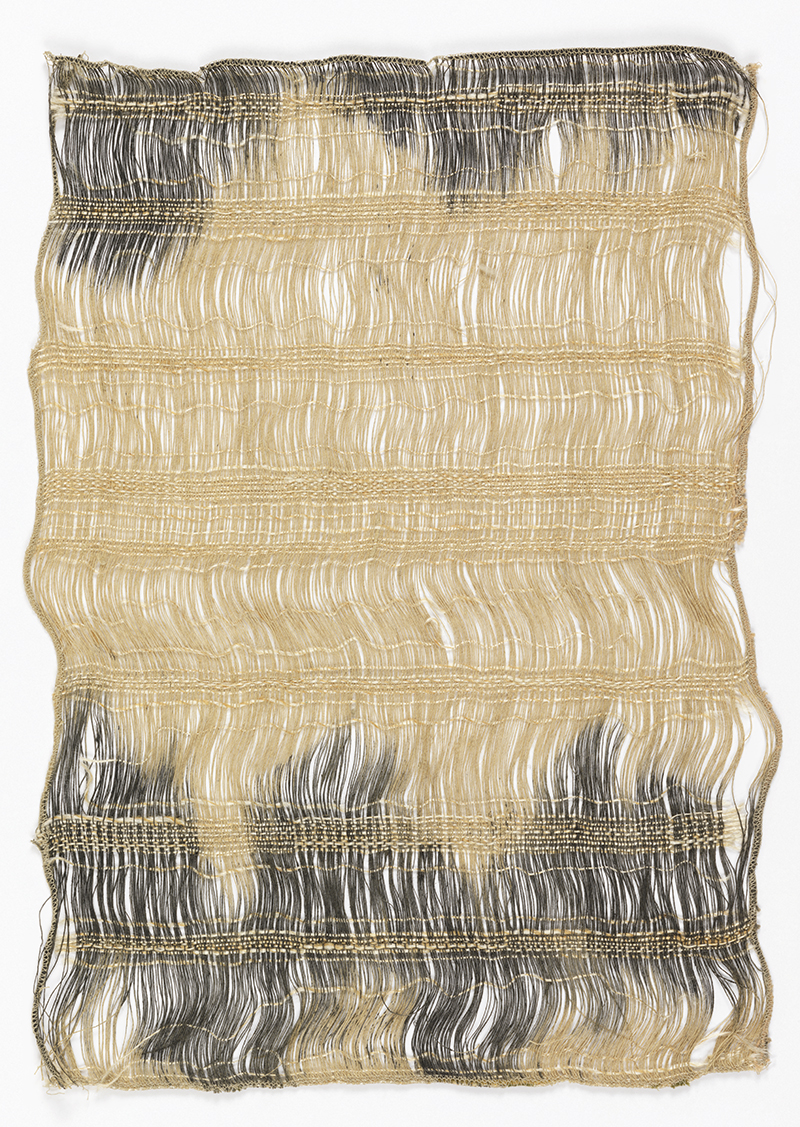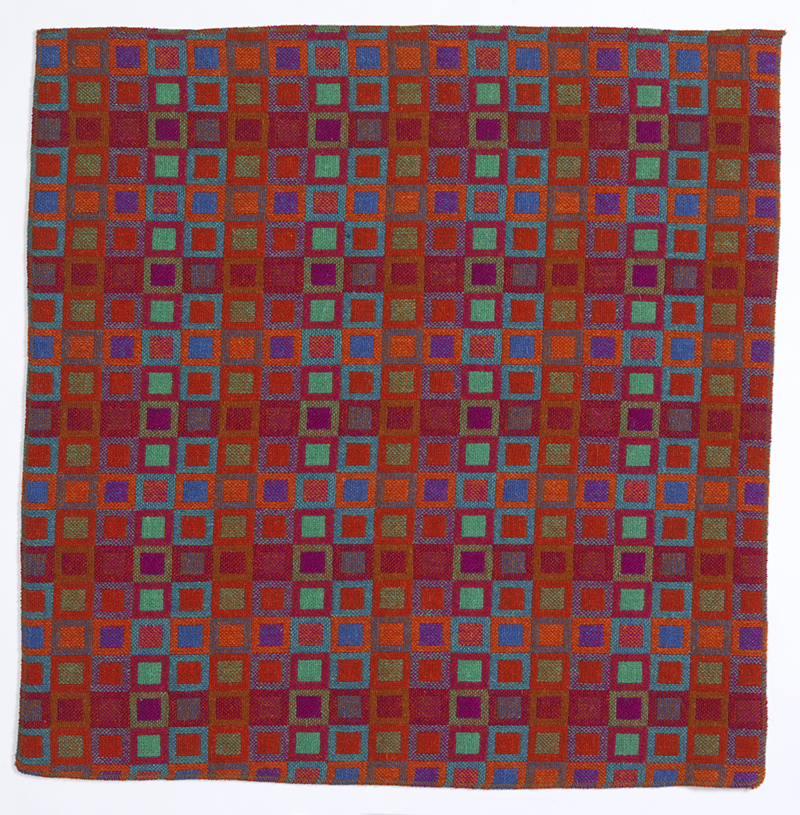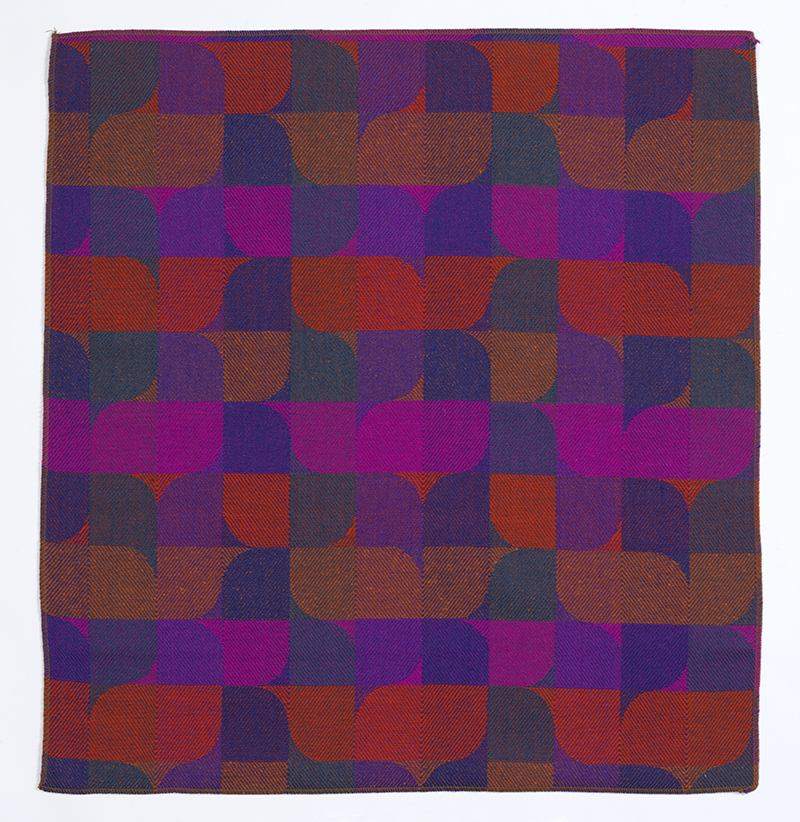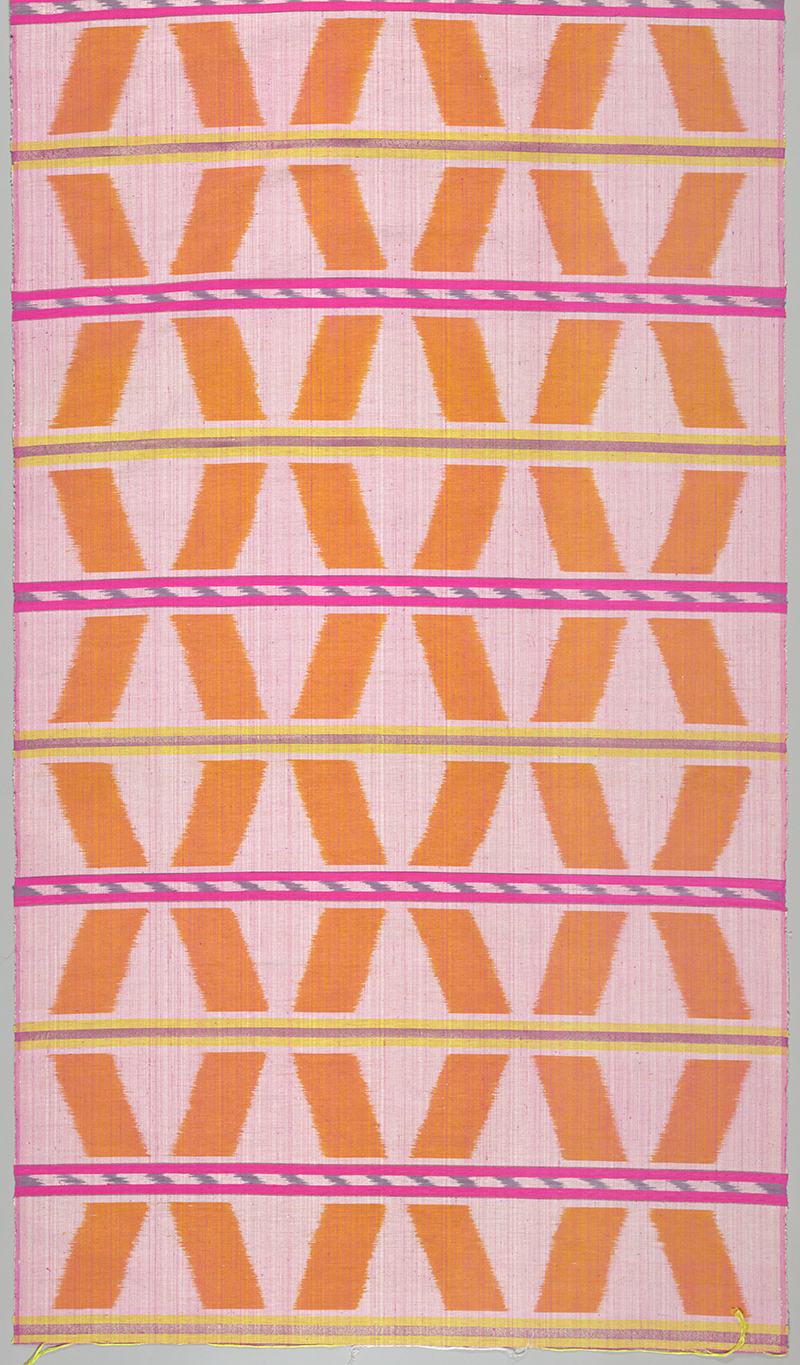Remembering Jack Lenor Larsen
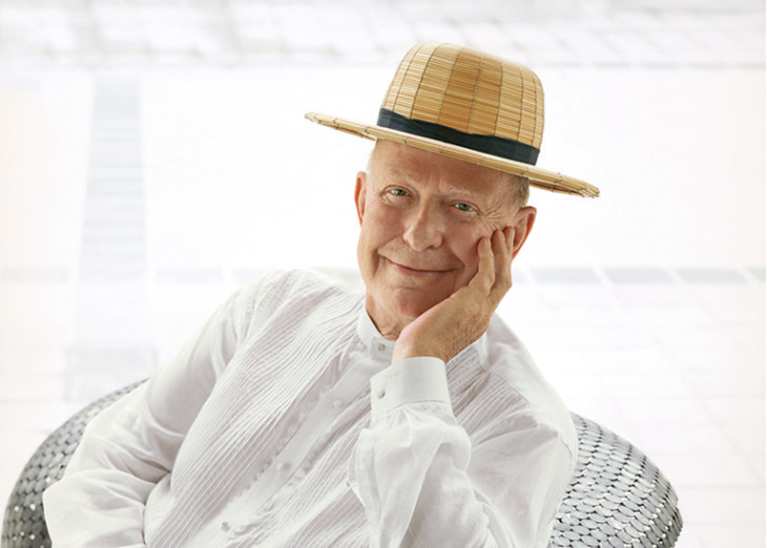
Jack Lenor Larsen, renowned American textile designer, passed away in December at the age of 93. We spoke with today’s textile leaders and asked them to share their memories of Larsen, and to reflect on the master weaver’s legacy.

Mary Murphy, senior vice president, design, Maharam
I have a very personal connection with Jack Lenor Larsen. He was the director emeritus of Haystack Mountain School of Crafts in Maine. In the 1980s, I studied with him up there, so I think of him first as a mentor. I ended up in the textile industry because of him and because of my time there. He had a huge impact on my life and my career.
The course I took with him was all about understanding woven constructions. We had to sit at a loom with one yarn that we used for days. We had to warp the loom with that one yarn and use the same yarn in the fill. He taught us basic things, really, the foundation of textile design, and he understood that extremely well. He also brought with him all kinds of ethnic textiles and talked about them. He would tell us why he selected those things for his own collection, and imbued them with the passion that he had.
People are certainly familiar with his travels for pleasure, but I don’t know if they are familiar with the travels resulting in products for the industry. Whether it was working with a mill in India or going to African and encouraging artisans there to weave mohair draperies, he was willing to take those risks. Jack was reaching out to people and places around the world, and he was able to develop things that were unique because of that. I think he added a richness to the industry that didn’t exist until he came along.

Sina Pearson, designer, Momentum Group
I first met Jack when I was a student at Cranbrook, and the fiber department went to visit him on a field trip to New York. And there we were, meeting at the hand of God, which was so incredible. I felt like I had known him before, because my parents actually had Jack Lenor Larsen fabrics in our house. I also felt a connection with him because I am from Seattle and he was born there. He went to the University of Washington, and I went there, too. What Jack felt about fabrics, color, and texture, and his love of what we call the Pacific Northwest mood, just really spoke to me.
Growing up in the Pacific Northwest, you are in a very multicultural environment. There are tribal reservations and you are surrounded by Native American culture. I think that combination of things must have inspired him in later years to explore all of these different cultures and weaving techniques.
Everything he brought to the table was this sort of explosion of creativity. He visualized things that we thought couldn’t be done, and then he made them. They were totally unique, and he opened our eyes to the possibilities. Weaving is a whole universe, and Jack explored every corner of that universe that could possibly be explored. He made us think beyond simple warp and weft. It’s staggering, all that he was able to do, and he did it with such joy. He gave us an amazing gift.

Mary Holt, president, upholstery division, Carnegie
I didn’t know Jack Lenor Larsen personally, but I can tell you that I became involved in the industry and developing textiles for interiors because of him. I studied fine arts in school, and I fell in love with weaving. I only thought about fashion at the time. I didn’t even know there was another world out there, and then I learned about Jack. He was an icon, and he changed the way I viewed textiles.
Jack was an incredible designer because he combined both the art and the craft. He took these old techniques and put a modern twist on them. His textiles were practical, you could actually use them. They weren’t made to just hang up on a wall. He was a master at weaving, his structures were really innovative. I remember Jack came out with this group of fabrics that were double woven, and they were so beautiful. He was able to take this technique of weaving double cloth, which traditionally is done by hand and turn it into something that could be produced on an industrial loom. To me, that was totally influential and pushed the envelope beyond what I thought weaving could do. It’s still very rare in our industry, because it takes a special skill set.
Jack also married residential and contract aesthetics. He embraced resimercial textiles. He would have this incredibly beautiful residential fabric that could meet contract specs, and then he would have a polyester that looked and felt just like silk. Everything was seamless.
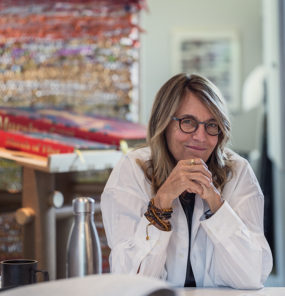
Suzanne Tick, creative director, Luum Textiles
I first met Jack in 1982, when I was working for Boris Kroll. Once a year, Jack would come to the office for lunch and for that day I was a server. I would get anything that they needed, but I didn’t mind because Jack was there. The table was set with fine china, and Mr. Kroll and Jack would have a glass of wine. The coffee with cream had to be a certain color, everything had to be perfect for Jack. Everything he had, everything he wore, and everything he designed was beautiful. He was just the epitome of elegance.
Jack really sought out the authenticity of different cultures, and he brought the structures, styles and patterns to the United States. He really showed us that you could work with people all over the world. He formed relationships with mills that had never worked in our industry before. He created these multi-dimensional fabrics, which were extraordinary and colored so beautifully. His colorings were out of this world, they were very sophisticated. He was using natural dyes like indigo and cochineal for the batiks, and they were gorgeous.
I remember he did these billowing drapery fabrics that looked totally new to me. He developed structures that a lot of us had never seen before, like these leno structures. Jack was constantly refining and perfecting all of it, but the quality was always consistent. He set the bar so high.

Kathrin Hagge, senior designer, Wolf-Gordon
When I came to the U.S, I worked at KnollTextiles. That was a really good fit for me, working on commercial fabrics. I heard about an opening at Larsen, and I was intrigued because this was a different area for me. The fabrics were more residential and modern. Jack was influenced by so many different crafts and textile forms from other continents. When I was the head of the studio, Jack had sold the company to Colefax and Fowler, but he stayed on as a consultant. He did a yearly trip to India, Thailand, and Japan. He would always buy a lot of goodies, and bring back beautiful fabrics. He would show them to us and we would discuss how the textiles were made.
The fabrics in the collection were fabulous, and they came in 25 to 30 colorways. Within a year the colors were a bit outdated and they needed to be updated to make them salable again. Jack would look at what we did, and give suggestions on coloration. He would always tell us what he liked and what he didn’t like so much. Sometimes he would even bring in a color he found somewhere, and he would tell us to integrate it into the line.
Jack was a great collector. He would go to a gallery and find some books with Japanese fabric swatches and he would buy them. He would bring them to us and we would look at them to find inspiration for a stripe or something else we wanted to develop. He was inspired by beauty and he surrounded himself with it. His world was an amazing and inspiring one.
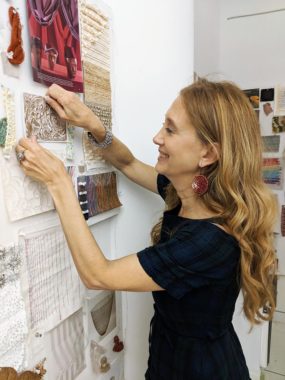
Lori Weitzner, founder, Lori Weitzner Design
I owe Jack so much for where I am today. He allowed me to design collections with my name on them, and that just boosted my career. And he also allowed me to design for him without being a full-time employee, so I was able to go to the studio and work with him. I had autonomy, but then he would always come in and have his say.
Jack didn’t care about sales, you know, he would do what was important. He was always pushing the envelope, trying something that hadn’t been done before. And even if it didn’t sell a yard, but it was something new, or it invited new thoughts about a textile or a country, he would just do it. That is beautiful, because now, you don’t see a lot of that, unfortunately. The reality is, businesses have to make money. But Jack really cared about his products, and I just loved that about him.
Jack could be very critical and intimidating, but he was also incredibly generous. I would just walk in one day and there would be a bouquet of flowers from his garden on my desk, out of the blue. The last time I went to see him at LongHouse we were going to have lunch together. He had the table set but he immediately changed the dishes to match my dress. That was Jack. It sums him up perfectly in a way, because for him everything was about aesthetic

Dorothy Cosonas, creative director KnollTextiles
When I was a student at FIT, we had a morning trip to Jack Lenor Larsen’s studio in the Village. He certainly made an impression, you know, as only Jack could. It sort of clicked for me then, the real possibility of textiles, not only a profession, but as a way of life, because Jack was so passionate when he was talking to us about what he did. I remember that clearly.
He was always ahead of the curve, and he knew innately what made a textile good. He didn’t think about a contract-residential split in any way. He just did what he wanted to do, and it worked. Jack elevated the material and construction, which allowed contract textiles to be a little bit more residential. He was not afraid to blend pattern, texture, and color, which was a new approach. With Jack, there was no longer this strict rule about using only solids for contract interiors. I think he was very influential in that respect.
I think it’s really a combination of two things about Jack’s work that inspire me the most. He had the ability to make a color sing within a product. Even if the pattern wasn’t what you were thinking about, you appreciated the fabric for the color sense that he brought to it. I also appreciate his worldview and the global influence. You could see how his extensive travels shaped every facet of his work.

Amanda Eaton, vice president of design, Arc-Com
I didn’t know Jack personally and I never did work for him, but I don’t think you could exist or participate in this industry without knowing his name and familiarizing yourself with his work. He was a visionary, and he pushed the envelope in the textile realm. My father worked in the textile industry, at Knoll, and he spoke a lot about Jack. That’s how I learned about him. I have seen some of his work at the museums in New York, and it is inspiring. I am really drawn to his sense of color, in particular.
Jack married things that were unexpected, and he was a pioneer in that way. He was leading instead of following. There’s a big crossover sensibility with his work. We see that all the time now, this blend of all types of fabrics, but back when Jack was designing it was surprising. He was true to himself, so he did what he did and the result was innovative. Whether it was a residential or contract fabric, there wasn’t a formula.
I just think the patterning and the color combinations are so intelligent. I will look at images of his work, and the pairings are so interesting to me. I always refer back to them.
